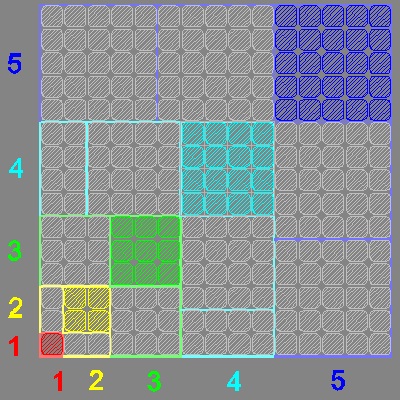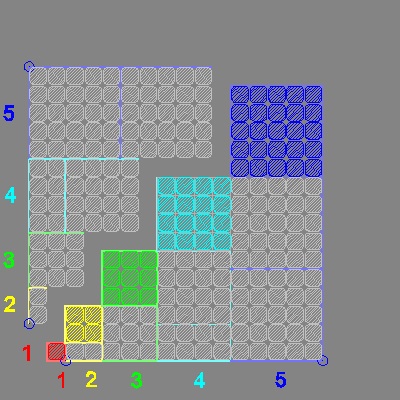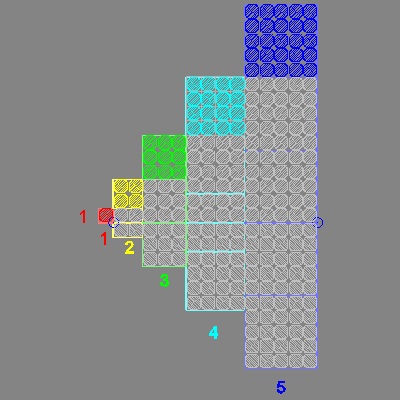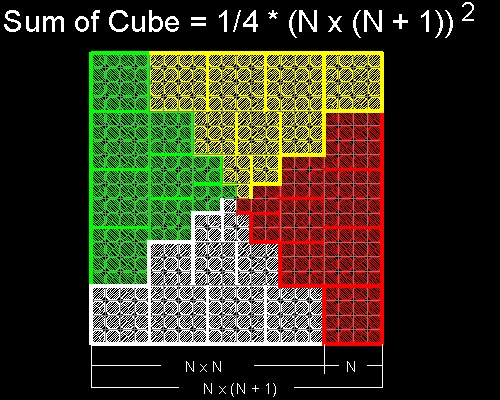
Go to Fun_Math Content Table Sums of Integers and Series
1 = 12
1 + 3 = 22
1 + 3 + 5 = 32
1 + 3 + 5 + 7 = 42
1 + 3 + 5 + 7 + 9 = 52
1 + 3 + 5 + 7 + 9 + 11 = 62
One way to interpret this pattern is "the average number of the N-th row is N !!"
Fibonacci(1170-1250) arranged the same odd numbers in a different pattern as shown below
and came up with a very elegant proof regarding the sum of integers cubed.
1 = 13
3 + 5 = 23
7 + 9 + 11 = 33
13 + 15 + 17 + 19 = 43
21 + 23 + 25 + 27 + 29 = 53
31 + 33 + 35 + 37 + 39 + 41 = 63
Fibonacci's interpretation of this table is the same as above.
Now let us take a look at the left hand side.
The last term of the odd integer on the N-th row is a triangular number TN,
because TN = 1 + 2 + .. + N
And we know that sum of the first p odd integers is p2
Therefore Fibonacci concluded
13+ 23+ 33+ ... + N3 = (1 + 2 + 3 + ... + N)2 =
(TN)2 = {(1/2)N(N+1)}2

You can see the process in animation for N=6 case.
It is easy to figure out the following relation.
13 + 23 + 33 + 43 + .. + N3 = (1 + 2 + 3 + 4 + .. + N)2
Please recall the "Triangular Number"
Tn = 1 + 2 + 3 + ... + n = (1/2)N(N+1)
So Sum of cube from 1 to N = (1/4){N(N+1)}2
To create this drawing and animation:
Load sumcube_2.lsp ---> (load "sumcube_2")
Then from command line, type sumcube_2
**************sumcube_2.dwg **************
Now let us separate upper left portion of this tile pattern as shown in the left below.
If this is rotated 90 degrees clock-wise, and aligned with the horizontal line,
where numbers 1,2,3,4 & 5 are written ,then we have a staircase like pattern
as shown in the right.
Just as the original square rotated 90 degrees around the red tile 4 times forms a square.
so does the staircase . This will lead to the next visualization scheme.


*************sumcube_2_1.dwg ************ ************sumcube_2_2.dwg **************

You can see the process in animation
for N=4 case.
To create this drawing and animation:
Load sumcube_1.lsp ---> (load "sumcube_1")
Then from command line, type sumcube_1
*****************sumcube_1_final.dwg *****************
All comments/suggestions should be sent to Takaya Iwamoto
Last Updated July 9-th, 2006
Copyright 2006 Takaya Iwamoto All rights reserved.